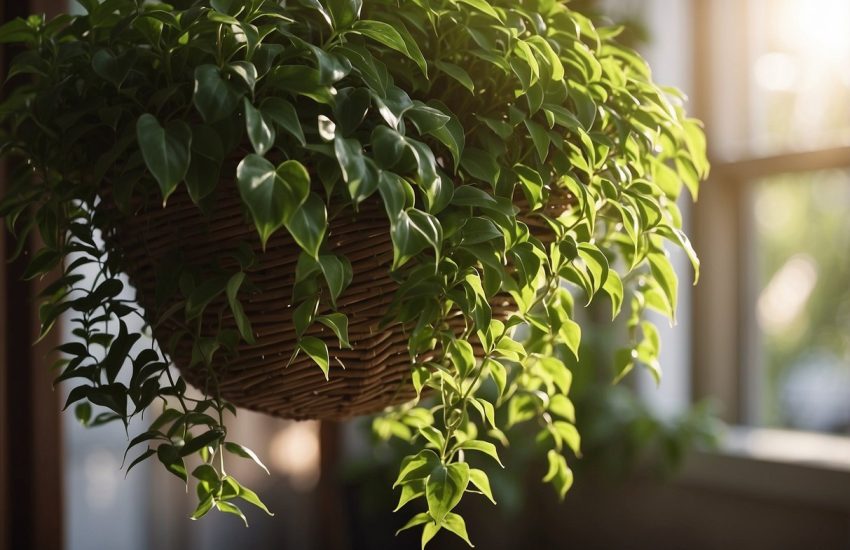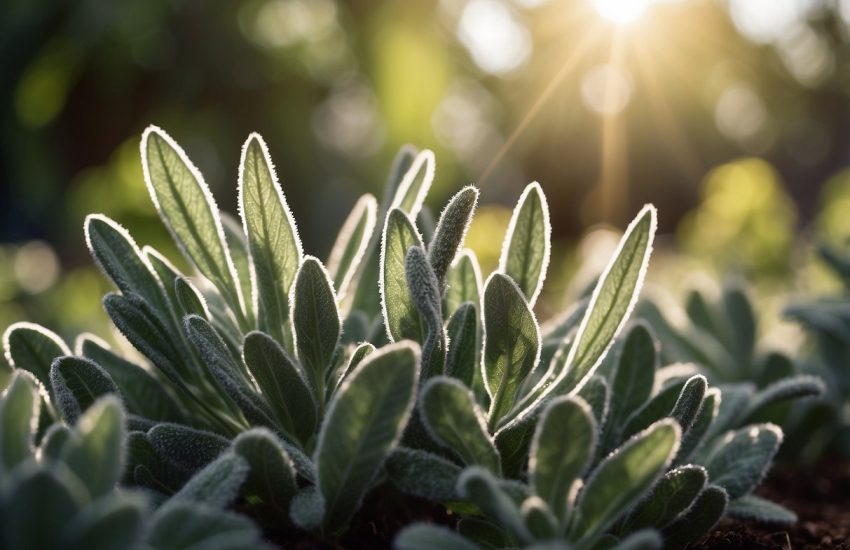How to Grow Edamame: A Simple Guide for Beginners
Edamame, also known as green soybeans, are a nutritious and delicious snack that is gaining popularity around the world. These little beans are packed with protein, fiber, and vitamins, making them a great addition to any diet. Growing edamame is relatively easy, and with a little care and attention, anyone can enjoy a bountiful harvest of these tasty beans.

To grow edamame, the first step is to choose a suitable location. Edamame plants prefer full sun and well-draining soil. They also require plenty of space to grow, so make sure to plant them at least 6 inches apart. Once you have chosen your location, prepare the soil by adding compost or other organic matter to improve its fertility.
Next, it’s time to plant the seeds. Edamame seeds should be planted in the spring or early summer, once the soil has warmed up. Simply place the seeds about 1 inch deep in the soil, and water them well. Within a few days, you should start to see sprouts emerging from the soil. From here on out, it’s important to keep the soil moist and weed-free, and to provide the plants with plenty of sunlight and nutrients. With a little patience and care, you’ll soon be enjoying a delicious harvest of fresh edamame.
Choosing the Right Variety

Growing edamame requires careful selection of the right variety. Understanding the different types of edamame varieties and selecting the right one for your climate and soil conditions is crucial to a successful harvest.
Understanding Edamame Varieties
There are several edamame varieties to choose from, each with its unique characteristics. Some popular edamame varieties include Midori Giant, Envy, Agate, Black Jet, Chiba Green, Karikachi, and Manitoba Brown.
Midori Giant is a favorite among home gardeners due to its large pods and sweet flavor. Envy is another popular variety known for its high yields and disease resistance. Agate is a hardy variety that is resistant to pests and diseases, making it an excellent choice for organic growers.
Black Jet is a unique variety with black seeds and pods that turn green when cooked. Chiba Green is a Japanese variety with a nutty flavor and tender texture. Karikachi is a cold-tolerant variety that is ideal for cooler climates. Manitoba Brown is an heirloom variety that is known for its high yields and delicious flavor.
Selecting for Climate and Soil
When selecting an edamame variety, it is essential to consider your climate and soil conditions. Some varieties, such as Karikachi, are cold-tolerant and can withstand cooler temperatures, while others, like Chiba Green, thrive in warmer climates.
Soil conditions are also crucial for edamame growth. Some varieties, such as Manitoba Brown, prefer well-drained soil, while others, like Black Jet, can tolerate heavy clay soils.
In summary, choosing the right edamame variety is critical for a successful harvest. Consider the climate and soil conditions in your area and select a variety that is well-suited for your growing conditions. With the right variety, you can enjoy a bountiful harvest of delicious edamame.
Preparing the Garden

Soil Preparation
Before planting edamame, it is important to prepare the soil properly. The soil should be well-draining, loose, and fertile. Edamame plants prefer a slightly acidic soil with a pH between 6.0 and 6.8. If the soil is too acidic, it can be amended with lime to raise the pH level. If the soil is too alkaline, sulfur can be added to lower the pH level.
Adding organic matter to the soil is also important to improve soil structure and fertility. Compost or well-rotted manure can be tilled into the soil a few weeks before planting to provide the necessary nutrients for healthy plant growth.
Planting Layout and Spacing
Edamame plants should be planted in rows with a spacing of 18-24 inches between each row. Within the rows, seeds should be spaced 2-3 inches apart. This will allow enough space for the plants to grow and produce pods without overcrowding each other.
Sowing Edamame Seeds
Edamame seeds should be sown directly into the garden in the early spring, after the last frost date. The soil should be at least 60°F for optimal seed germination. Seeds should be planted 1-2 inches deep in the soil and covered with soil. Water the soil immediately after planting to help the seeds settle in.
In conclusion, preparing the garden for edamame planting is crucial for a successful harvest. By ensuring the soil is well-draining, fertile, and has the proper pH level, and by planting seeds in the correct spacing and depth, gardeners can create an ideal environment for edamame plants to thrive.
Cultivation and Care
Growing edamame is a rewarding experience for any gardener. This section will provide an overview of the cultivation and care practices that will help you grow healthy and productive edamame plants.
Watering and Nutrients
Edamame plants require a consistent supply of water to thrive. It is recommended to water them deeply once or twice a week, depending on the weather conditions. It is important to ensure that the soil is well-draining to avoid waterlogging, which can lead to root rot.
In terms of nutrients, edamame plants require a balanced fertilizer that is high in nitrogen. It is recommended to fertilize the plants every two to three weeks during the growing season. A soil test can help you determine the specific nutrient needs of your soil.
Weeding and Mulching
Weeding is an important aspect of edamame cultivation. Weeds can compete with the plants for nutrients and water, which can lead to stunted growth. It is recommended to weed regularly, either by hand or with a hoe.
Mulching is also beneficial for edamame plants. It can help to retain moisture in the soil and suppress weed growth. It is recommended to mulch with organic materials such as straw or leaves.
Disease and Pest Management
Edamame plants are susceptible to a few common diseases and pests. Powdery mildew can be a problem in humid conditions, and can be controlled with a fungicide. Japanese beetles can also be a problem, and can be controlled with insecticidal soap or neem oil.
Nematodes can also be a problem in some soils. It is recommended to rotate crops and avoid planting edamame in the same location for consecutive years.
Overall, with proper cultivation and care practices, you can grow healthy and productive edamame plants in your garden.
Harvesting and Storage
Determining Edamame Maturity
Determining the maturity of edamame is crucial for a successful harvest. Edamame pods should be harvested when they are fully developed, but still green and plump. The ideal time to harvest is when the pods are about 2-3 inches long and the beans inside are still green. As the pods mature, they will turn yellow and the beans will become hard and inedible.
Harvest Techniques
Harvesting edamame can be done by hand or with a pair of scissors. When harvesting by hand, gently pull the pods from the stem. Be careful not to damage the plant or the neighboring pods. Alternatively, use scissors to cut the pods from the stem. This method is recommended for larger crops as it is faster and more efficient.
Storing for Freshness
To keep edamame fresh, it is important to store them properly. Freshly harvested edamame can be stored in the refrigerator for up to a week. Place them in a plastic bag or an airtight container. If you plan to freeze the edamame, blanch them first in boiling water for 2-3 minutes, then place them in a freezer-safe container. Frozen edamame can be stored for up to 6 months.
Overall, harvesting and storing edamame is a simple process that can be done with minimal effort. By following these tips, you can ensure that your edamame is ripe, flavorful, and stored properly for maximum freshness.
Beyond the Garden

Nutritional Benefits
Edamame is a nutritional powerhouse that is rich in protein, fiber, vitamins, iron, potassium, calcium, antioxidants, and isoflavones. One cup of cooked edamame contains around 17 grams of protein, which is equivalent to the amount of protein found in one cup of milk. Edamame is also an excellent source of fiber, with one cup containing around 8 grams of fiber, which is about one-third of the recommended daily intake for adults.
In addition to protein and fiber, edamame is also packed with vitamins and minerals. One cup of cooked edamame contains approximately 10% of the recommended daily intake of vitamin C, 20% of vitamin K, and 15% of folate. Edamame is also a good source of iron, potassium, and calcium.
Culinary Uses
Edamame is a versatile ingredient that can be used in a variety of dishes. It has a mild, nutty flavor that pairs well with a range of ingredients. Edamame can be enjoyed on its own as a snack or added to salads, stir-fries, soups, and stews.
Frozen edamame is a convenient option that can be easily stored in the freezer and used whenever needed. To prepare frozen edamame, simply boil it for 3-5 minutes or microwave it for 2-3 minutes.
Edamame can also be seasoned with a variety of flavors to enhance its taste. Some popular seasonings for edamame include salt, garlic, lemon, and chili powder.
Overall, edamame is a nutritious and flavorful ingredient that can be enjoyed in a variety of dishes. Its high protein and fiber content make it a great option for vegetarians and vegans, while its mild flavor makes it a versatile ingredient for a range of cuisines.
Frequently Asked Questions

What are the steps for planting edamame seeds?
To plant edamame seeds, first, select a sunny spot with well-draining soil. Then, prepare the soil by adding compost or other organic matter. Plant the seeds about an inch deep and three inches apart. Water the seeds regularly, keeping the soil moist but not waterlogged. Edamame seeds usually take about 7-10 days to germinate.
Can edamame be cultivated successfully in containers?
Yes, edamame can be grown successfully in containers. Choose a container with a diameter of at least 12 inches and a depth of 12-18 inches. Fill the container with well-draining soil and plant the seeds about an inch deep and three inches apart. Water the seeds regularly, keeping the soil moist but not waterlogged. Edamame plants grown in containers may require more frequent watering than those grown in the ground.
What are the ideal conditions for growing edamame indoors?
To grow edamame indoors, provide the plants with at least six hours of bright, direct sunlight each day. Use a well-draining potting mix and a container with drainage holes. Plant the seeds about an inch deep and three inches apart. Water the seeds regularly, keeping the soil moist but not waterlogged. Edamame plants grown indoors may require additional fertilization to ensure adequate nutrient levels.
How long does an edamame plant typically live?
Edamame plants typically live for one growing season, which is usually around 90-100 days. Once the pods have matured and been harvested, the plant will begin to decline.
What support structures, if any, are required for edamame plants?
Edamame plants do not typically require support structures. However, if the plants are grown in an area with high winds, support structures such as stakes or trellises may be necessary to prevent the plants from falling over.
Are there specific considerations for growing edamame in different regions, such as Florida or Texas?
Edamame can be grown in a variety of regions, but there are some specific considerations for certain areas. In regions with hot summers, such as Florida or Texas, it may be necessary to provide shade for the plants during the hottest part of the day. Additionally, in areas with high humidity, it may be necessary to water the plants less frequently to prevent fungal diseases.


